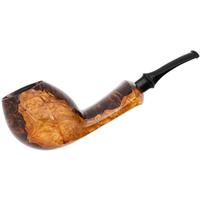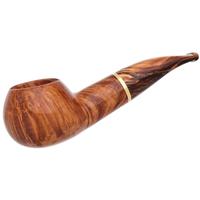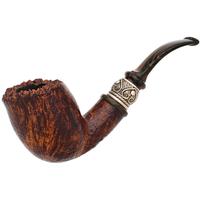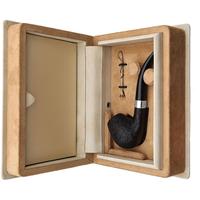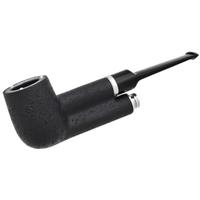2. Used vinegar to further break down the tobacco, which was widely misunderstood and the subject of endless complaints. I've still seen this in the last several months.
From Mike McNiel
-"McClelland buys and ages their leaf in their storage building in the state of North Carolina for three to five years. During this period of time there occurs a natural "sweating" of the high sugar content leaf.
The next step is to ship the aged leaf to their factory in Kansas City where it is pressed and further aged in cake form for a period of time. Than it is further aged, in their tins, for one to two years before shipping to retailers.
The aroma, or imagined taste, is in reality a natural fermentation that takes place during this entire ageing process. Their tobaccos are of the best of high grade and quality with a very high sugar content, which enables this "natural" process to occur."
From Greg Pease
-"Many have commented on the "ketchup" odor of certain Virginia blends, the result of vinegar produced during fermentation. (I always noticed a pronounced "dill pickle" aroma in the old Sullivan Powell’s Gentleman’s Mixture.) Do tobacco processors and blenders use specifically chosen yeast, acetobacter or lactobacillus cultures to engender the results they want, or are they just letting nature take its course, as did the winemakers, brewers and bakers of old? Has anyone ever tried using Dekkera/Brettanomyces to produce a "Belgian" style pressed Virginia flake?
Pease: Personally, I’ve never quite been able to grok the "ketchup" thing. Certainly, there are some tobaccos that exhibit an acetic aroma, and with some expansion of the imagination, I might be able to find something akin to BBQ sauce on occasion, or perhaps Branston Pickle, but not ketchup. I’ve even gone so far as to open a bottle of ketchup and compare its aroma side-by-side with that of the most infamous of "ketchup" tobaccos, and I still don’t get it. I think people confuse their condiments, sometimes. Next thing you know, it’ll be mustard, and arguments will ensue over whether it’s Dijon or yellow.
More seriously, you’re right in that fermentation is the cause of this notable aroma, whatever someone may choose to call it. To the best of my knowledge, blending houses don’t inoculate their tobaccos with specific microflora in order to get these effects, but rely on the wild yeasts and bacteria that are present in their environment. One one occasion, I managed to recreate a similar effect, albeit accidentally, so I’m quite sure it’s not the result of any sort of additives; just the natural process that tobacco goes through under certain controlled conditions.
I like the idea, though, of using specific saccharomyces to excite fermentation in a tobacco. It might make for an interesting red ale. And, from the trivia department, the aging of tobacco was once referred to as lagering. Maybe beer and tobacco are linked more closely than we know."



